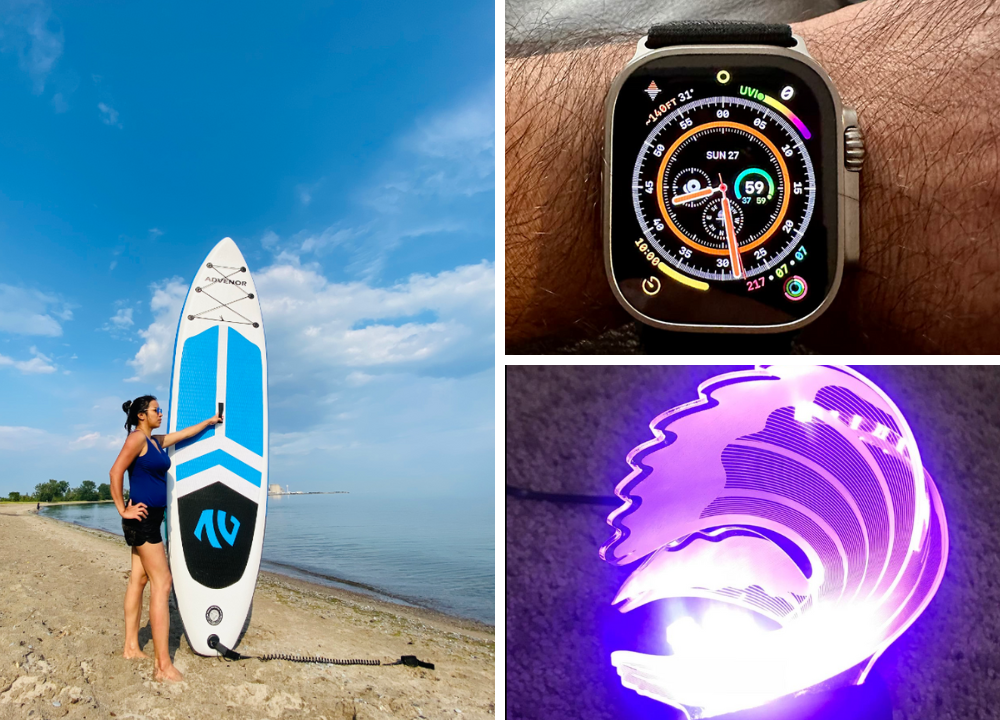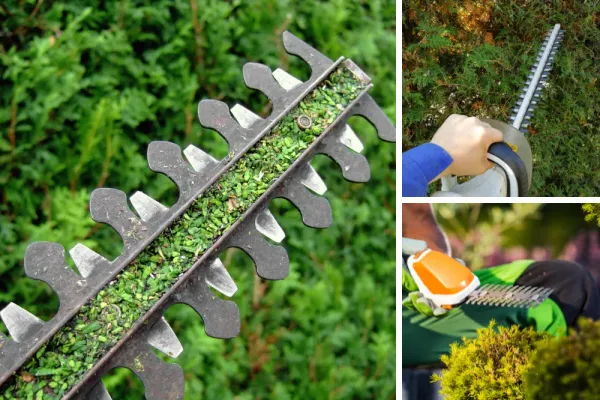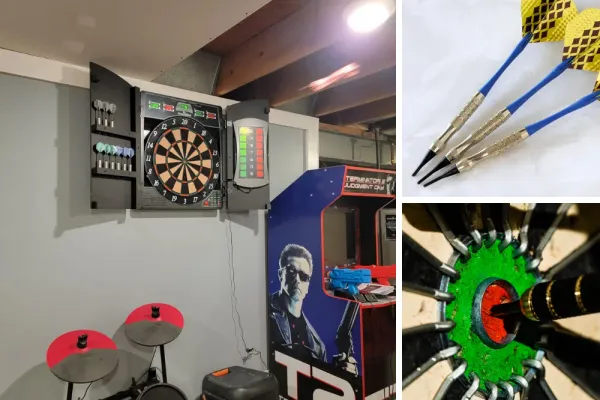Diving into beginner longboard surfing can be thrilling yet daunting for newcomers. In this comprehensive guide, you'll learn the essentials: picking the right longboard, grasping fundamental techniques, and understanding how to ride your first wave. Step into the world of beginner longboard surfing with confidence, as we break down the basics to get you started on your surfing adventure.
Key Takeaways
- Longboards are the go-to for beginners because they are stable, easy to paddle, and forgiving, making catching waves and standing up easier for new surfers.
- Mastering longboard fundamentals like paddling, popping up, and maintaining balance is essential, and choosing the right board—usually a soft top with adequate volume—sets you up for success.
- Surf etiquette and safety are crucial, as is practicing regularly with proper gear, to progress from a beginner to an intermediate longboard surfer while enjoying the journey.
Why Choose Longboard Surfing as a Beginner?
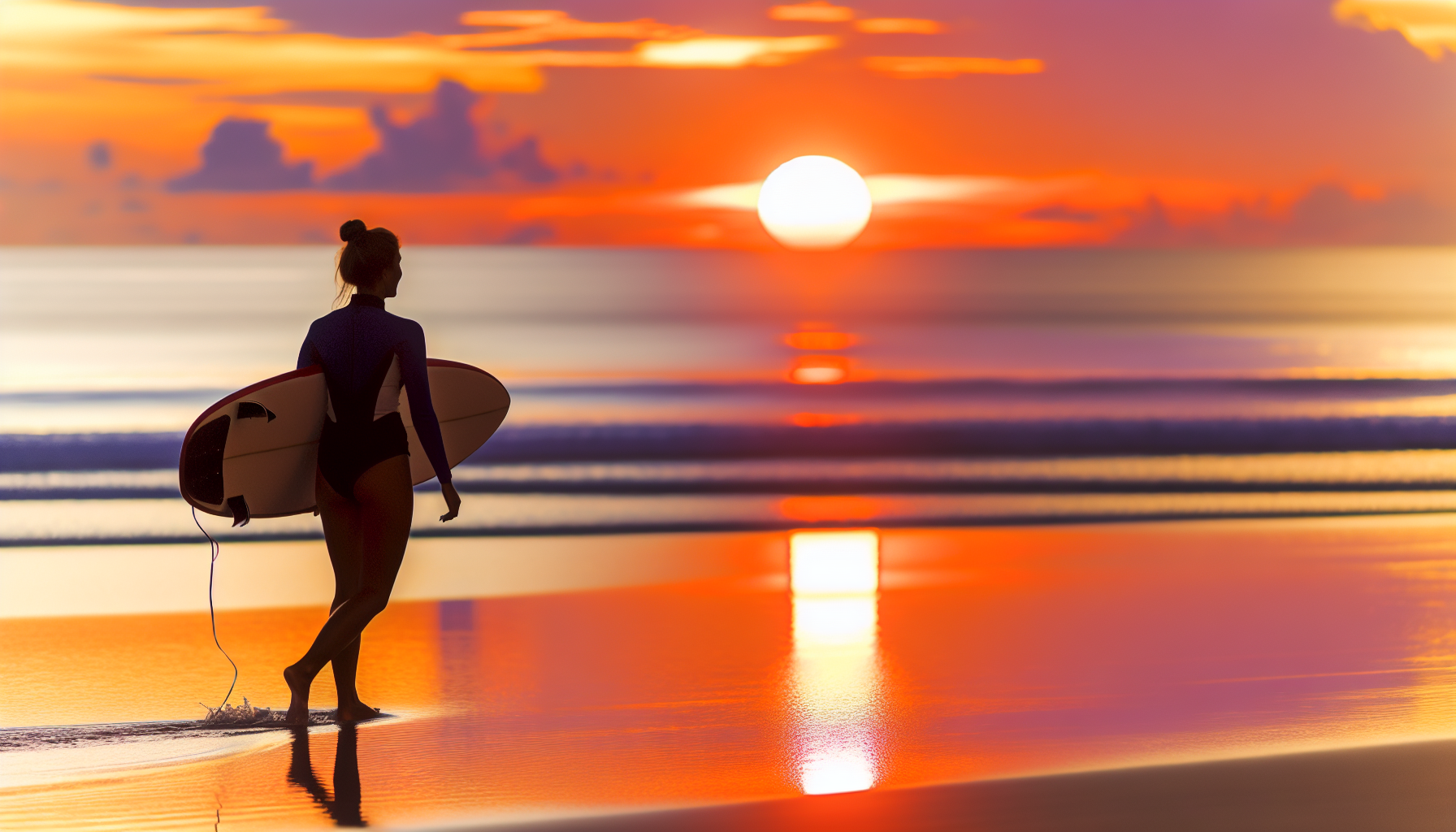
Beginners in the surfing world often find longboard surfing to be an excellent starting point. Why? Well, longboards are known for their exceptional stability and user-friendly design, making it much easier for beginners to pop up and maintain their balance on the board. Plus, the generous volume and length of longboard surfboards allow for effortless paddling and wave-catching, even in smaller conditions.
As a novice surfer, the forgiving nature of longboards will be appreciated. These boards offer a more relaxed learning curve, providing you with the opportunity to practice various maneuvers and have fun even on smaller waves. This is why many beginner surfers choose longboards for their first surfboard.
Embarking on a surfing journey can pose several challenges. It requires patience, perseverance, and lots of practice. But with longboard surfing, your surf journey becomes a lot more enjoyable. You'll be able to catch more waves during your surfing session, improving your surfing skills faster.
So, are you ready to surf on a longboard? Remember, every great longboard surfer started as a beginner. With a soft top surfboard under your feet and the right longboard surfing tips, you'll be riding waves like a pro in no time!
Essential Longboard Surfing Techniques
Mastering longboard surfing involves more than merely getting on a board with high hopes. It involves mastering a set of techniques that are crucial for effectively catching waves and progressing in your skills. Paddling and popping up are among these essential techniques that novice longboard surfers must learn.
The good news? The extra buoyancy, length, and volume of a longboard facilitate easier paddling and popping up compared to shorter surfboards. This means that with the right guidance and plenty of practice, you'll be well on your way to becoming proficient at these techniques.
But wait, there's more! Beyond paddling and popping up, maintaining balance is also vital when you're out on the waves. And guess what? We're going to delve deeper into each of these techniques for you to fully grasp their significance!
Paddling Technique
Paddling serves as a stepping stone to catching and riding waves, not merely as a means of moving around in the water. Efficient paddling is crucial for longboard surfing as it conserves energy, extends surfing sessions, and helps to prevent shoulder injuries.
You might wonder how to paddle effectively on a longboard. First things first, you need to position your hands correctly. Place them flat on the deck of the surfboard aligned with your ribcage. This will give you the power you need to propel yourself forward.
Remember, proper paddling involves extending the arms fully, lifting the chest, and ensuring the right arm movement for efficient wave catching and preparation for the pop-up. Think of it as doing a front crawl stroke in swimming – it's all about the reach and pull.
Don't let the initial difficulty of paddling discourage you if you're new to longboard surfing. As with all surfing skills, practice is key. Keep at it, and before you know it, you'll be paddling your way to your first wave!
The Pop-Up
In longboard surfing, the pop-up maneuver holds significant importance. It's that exciting moment when you transition from lying down on the surfboard to standing up and riding the wave. You've got to get the pop-up right to enjoy the thrill of surfing.
Beginners often find the 'figure four' pop-up technique easy to grasp. In this method, you first place your back foot, followed by your front foot, while avoiding the use of knees. This technique is not only user-friendly but also prepares you for more advanced moves as you progress.
Speaking of advanced moves, for more experienced surfers, there's the advanced pop-up. This involves sliding both feet under the body simultaneously, using the momentum generated from lying down. But don't worry if you're not there yet. With time and practice, you'll master this technique too!
Keep in mind that the pop-up should be a swift and fluid motion. So, don't rush it. And most importantly, don't forget to enjoy it. After all, it's these moments of standing up and riding the waves that make longboard surfing so exhilarating!
Maintaining Balance
Achieving balance on a longboard requires moving in sync with the ocean's rhythm, not merely standing upright. Getting your foot placement right is the first step. Here's how:
- Your back foot should be just in front of the fins.
- The front foot should be past the midpoint of the board.
- The feet should be centered over the width of the surfboard.
- The back foot toes should be pointing at a 90-degree angle to the rail.
Balancing involves more than just correct foot placement. To balance properly, follow these steps:
- Bend your knees
- Keep your head and shoulders pointed in the direction you want to travel
- Shift your hips backwards and forwards more easily by slightly pointing your knees towards each other.
By following these tips, you'll be able to improve your balance while moving.
To aid your balance further, extend your arms over the sides of the surfboard, much like a tightrope walker would do. And remember to keep your hands outside each of the surfboard's rails for easier turning.
Lastly, adjust your stance as needed, using your heels to apply pressure and maintain control. Remember, this is crucial for maintaining balance and directing your movements effectively. It might seem a lot to take in, but with practice, these movements will become second nature. And before you know it, you'll be able to tackle steeper waves, carving them up like a pro!
Longboard Surfboard Selection for Beginners
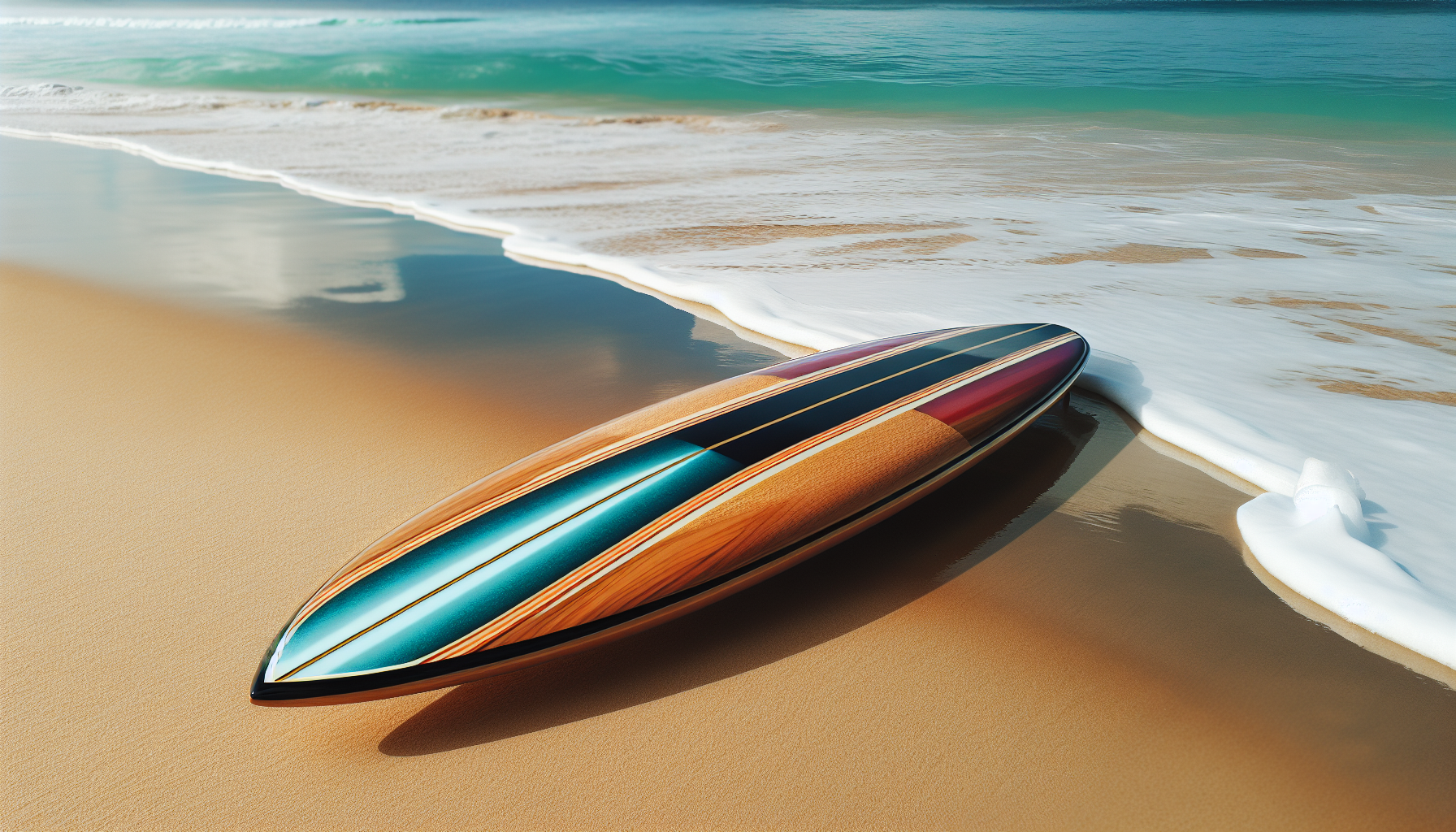
Especially for beginners, choosing the right board is a critical step in their surf journey. Longboard surfboards are:
- wide
- flat
- stable
- thick
- buoyant
making them user-friendly and an excellent choice for beginners. A good beginner longboard is typically about 3 feet longer than the surfer's height to ensure it has enough volume for proper buoyancy and wave catching.
When choosing a longboard, look for a fuller shape and a length of about 8 to 11 feet with a rounded nose. This provides the necessary stability and buoyancy to learn effectively. Foamie or foam surfboards, also known as soft top surfboards, offer beginner-friendly properties such as stability, ease of paddling, and safety due to their construction. For more advanced riders, high-performance longboards can provide an exciting and challenging experience.
For beginners, epoxy surfboards are a great choice due to their:
- Durability
- Stability in the water
- Strength
- Buoyancy
- Ding resistance
They provide a reliable option for those just starting out in the sport. They have a polystyrene foam core coated in epoxy resin, which provides all these benefits for beginners.
And never underestimate the importance of safety. Soft longboards for beginners prioritize safety, with their construction reducing the risk of injury and adding extra buoyancy for easier wave catching.
Bear in mind that the volume of a beginner's longboard needs to be sufficient to ensure floatability, stability, and ease of paddling, which are essential for catching waves and standing. Choosing the right board sets you up for success, so take your time to make the right decision.
Progressing from Beginner to Intermediate Longboard Surfing
After mastering the basics, you can elevate your longboard surfing skills to the next level. Progressing from beginner to intermediate involves:
- Refining your fundamentals
- Challenging yourself with different wave shapes and sections
- Wave selection becomes more integral as you advance, emphasizing the need for waves that provide the right balance of size and power for nose riding and practicing turns.
Understanding the characteristics of different surf breaks, like point, reef, and beach breaks, is crucial for selecting the best waves for longboarding. It's all about exploring different conditions and learning how to adapt your surfing to them.
Another milestone in your progression is practicing cross-stepping, especially when riding steeper waves. This advanced technique showcases your improved balance and agility on the longboard. And don't forget about your surfboard fins. They provide crucial control and maneuverability on waves, and using different fin setups can offer varying stability and response.
Progressing in your surf journey is not just about improving your physical skills. It's also about embracing the surf lifestyle and learning to enjoy every wave, every wipeout, and every step of your journey. So keep pushing your limits, keep learning, and most importantly, keep enjoying the ride!
Surf Etiquette and Safety Tips for Longboard Surfers
Even though longboard surfing primarily focuses on fun and excitement, one must not forget the significance of etiquette and safety. Understanding and adhering to surf etiquette, such as not dropping in on another surfer who's closer to the peak and avoiding 'snaking' to gain priority over waves, are fundamental rules of the surf.
Respect is a key aspect of surf etiquette. Show respect towards other surfers and locals, especially when surfing unfamiliar breaks. Remember, the ocean is for everyone to enjoy, and a little respect goes a long way in ensuring a pleasant surf session for all.
Safety is another critical aspect of longboard surfing. Always use a leash to maintain control of the longboard and prevent it from causing injury to others after a fall or wipeout. Also, ensure to keep a grip on your longboard to avoid potential injuries to other surfers in the event of losing balance or wiping out.
Stay alert and aware of your surroundings in the water, including other surfers, ocean conditions, and potential obstacles. And always be considerate of others by not trying to catch every wave if you cannot consistently ride them, and share the waves with your fellow surfers. Surfing is not just a sport; it's a community where we all come together to catch waves. So let's keep it safe and fun for everyone!
Top Longboard Surf Spots for Beginners
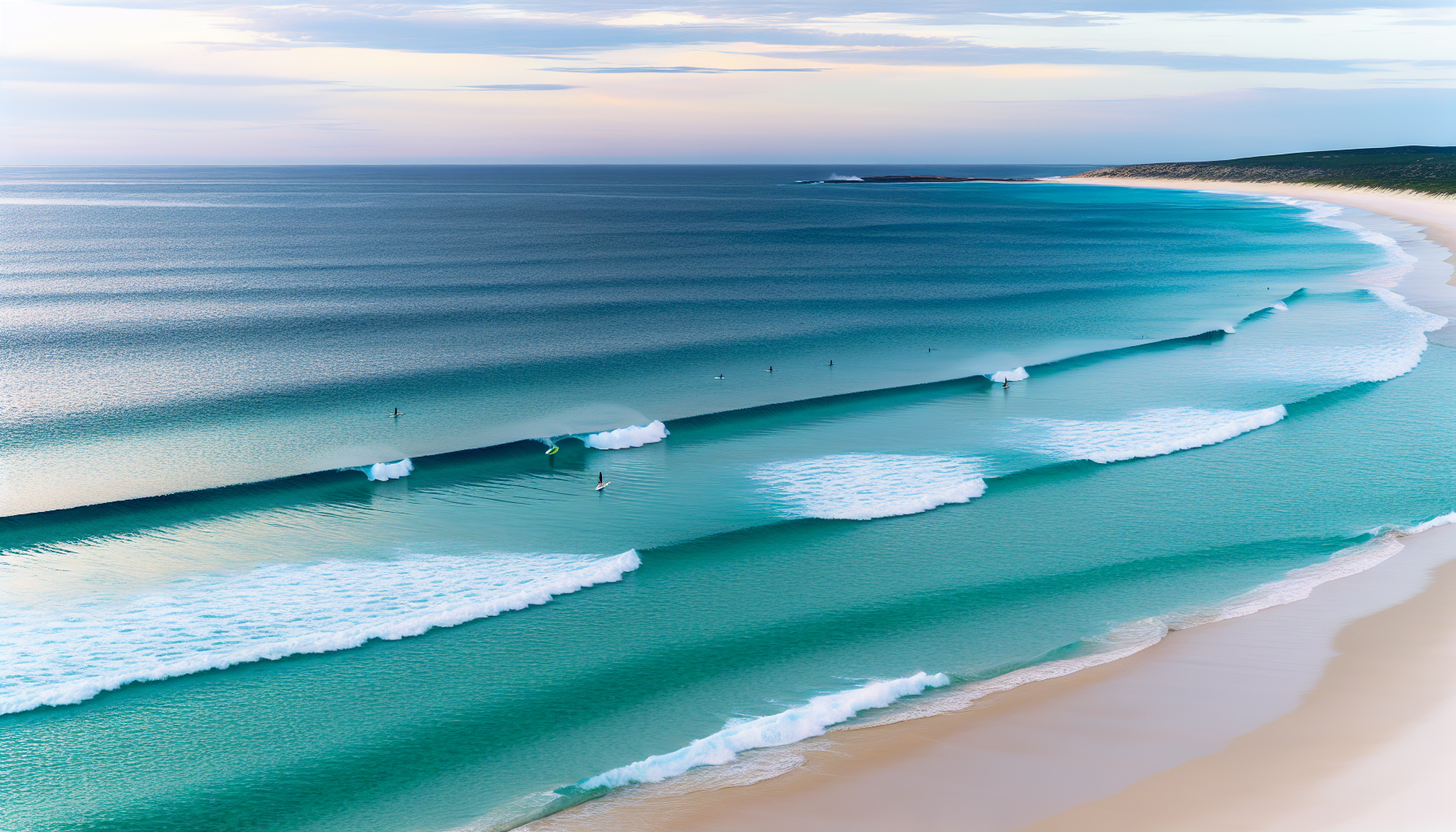
For beginners, choosing the appropriate surf spot can drastically enhance their longboard surfing experience. The ideal spots for novice surfers offer small, manageable waves and point breaks that create perfect long waves for practicing longboarding skills.
Some of the top spots for beach vacations include:
- Galveston Beach in Texas
- Cocoa Beach in Florida
- New Buffalo on Lake Michigan
- Hainan Island in China
- Ribeira d’Ilhas in Ericera, Portugal
- Scorpion Bay in Baja California, Mexico
If you're up for a bit of travel, you might want to check out these international spots, including the beautiful Costa Rica.
Other recommended surf spots are:
- Queens in Hawaii
- Cardiff in California
- Batu-Bolong in Bali
- Lafiténia in France
- Lazy Left in Sri Lanka
- Waikiki in Honolulu
- San Onofre State Beach in California
- Cowell Beach in Santa Cruz
- Devils Punchbowl State Natural Area in Oregon
Each spot has its welcoming conditions for novices.
While these places offer ideal conditions for beginners, each spot presents its unique challenges. So whether it's:
- finding a guide in rugged locations like Hainan Island
- walking back after long rides at Chicama due to strong currents
- dealing with potential overcrowding at popular spots such as Queens
Be sure to do your research and prepare accordingly.
Longboard Surfing Gear Essentials
Equipping yourself with the appropriate gear is indispensable for your longboard surfing journey. A wetsuit is a must-have, and options for beginner longboard surfers range from:
- top-performance suits like the Rip Curl E7 Flashbomb Heatseeker
- warmer options like the O'Neill Hyperfreak Fire
- lighter and fairly priced suits like the Quiksilver Highline
When choosing the thickness of your wetsuit, the water temperature should guide your choice.
Sun protection is another essential part of your surfing gear. Ensure you have your sunscreen, hats, and sunglasses to prevent sunburn and related health issues during longboard surfing. Skin protection is also crucial, and wearing rash guards and using Vaseline can help prevent rashes often caused by foam boards.
Don't forget about taking good care of your gear. Here are some tips:
- Use a quality surfboard bag to protect your board from dings and scratches
- Rinse all your gear after surfing sessions
- Properly store your gear after each use
Taking these steps will help ensure that your gear stays in good condition and lasts longer.
In longboard surfing, the right gear can make all the difference. So choose wisely, take care of your equipment, and be prepared for an amazing surf session!
Practice Makes Perfect: Tips for Improving Your Longboard Surfing Skills
The adage 'practice makes perfect' holds true for longboard surfing as well. Practicing every day in ideal conditions is crucial for faster progress in longboard surfing. But beyond just practice, there are other ways to improve your longboard surfing skills.
Balance training, including exercises with or without equipment, is beneficial in improving coordination, reaction time, and agility needed for longboarding. Some examples of balance training exercises are:
- Standing on one leg
- Walking on a balance beam
- Using a balance board or wobble board
- Performing yoga poses that challenge balance
Carver skateboards, for instance, offer a way for surfers to simulate surfing movements on land and develop necessary strength. Cardio and endurance exercises, like the Tabata protocol, play a vital role in enabling surfers to paddle in challenging conditions and prolong their surfing sessions.
Incorporating breathwork and other breathing exercises can help in controlling emotions, expanding lung capacity, and preparing for underwater hold downs. And remember, enjoying the journey of learning and embracing the surfing lifestyle is essential for personal growth in longboard surfing. So keep practicing, keep improving, and keep loving every moment of your surf journey.
Summary
As we've seen, longboard surfing is an exciting and rewarding journey. From choosing the right longboard, mastering essential techniques, observing surf etiquette, to improving your skills, each step brings its unique challenges and rewards.
But remember, the real joy of longboard surfing lies not in becoming an expert but in the journey itself. So embrace each wave, each wipeout, each triumph, and each lesson. Let each surf session be an opportunity for growth, fun, and adventure. Happy surfing!
Frequently Asked Questions
How do I choose a longboard surf?
Choose a longboard based on the typical conditions you ride, your height, weight, and preferred style of surfing to ensure it suits the waves you ride.
Is longboard or shortboard surfing easier?
Longboard surfing is easier for beginners due to its size and stability, allowing for a smoother and more relaxed ride. It provides more room to sit or lay on the board and helps new surfers to get up on their feet faster.
Is it easy to surf on a longboard?
Yes, surfing on a longboard is easier to catch waves on compared to a shortboard, making it a great option for beginners. Plus, longboards are easier to paddle, allowing for a more enjoyable surfing experience.
Why is longboard surfing ideal for beginners?
Longboard surfing is ideal for beginners because of the exceptional stability and user-friendly design, making it easier to pop up and maintain balance, while allowing for easy paddling and wave-catching, even in smaller conditions. Start with a longboard for a smoother learning experience.
What are the essential longboard surfing techniques?
To become proficient in longboard surfing, it's crucial to master paddling, popping up, and maintaining balance. These techniques are essential for catching waves and improving your skills.
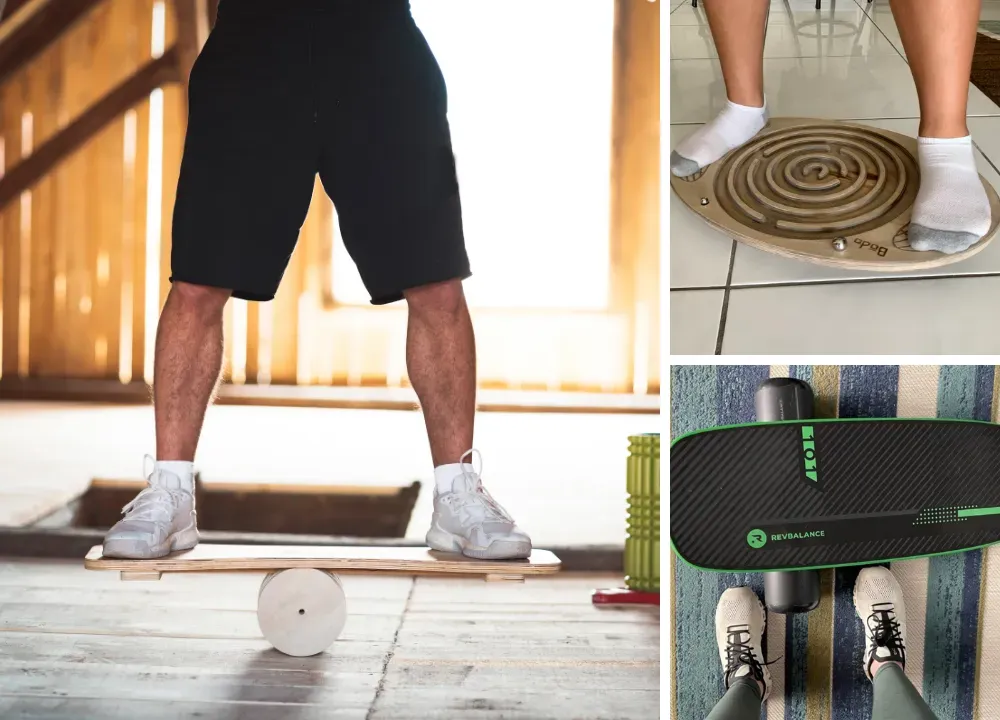
it's
